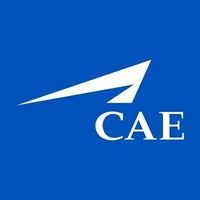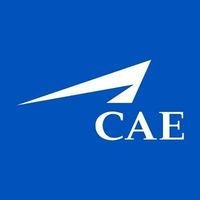
CAE Inc
TSX:CAE


| US |

|
Johnson & Johnson
NYSE:JNJ
|
Pharmaceuticals
|
| US |

|
Berkshire Hathaway Inc
NYSE:BRK.A
|
Financial Services
|
| US |

|
Bank of America Corp
NYSE:BAC
|
Banking
|
| US |

|
Mastercard Inc
NYSE:MA
|
Technology
|
| US |

|
UnitedHealth Group Inc
NYSE:UNH
|
Health Care
|
| US |

|
Exxon Mobil Corp
NYSE:XOM
|
Energy
|
| US |

|
Pfizer Inc
NYSE:PFE
|
Pharmaceuticals
|
| US |

|
Palantir Technologies Inc
NYSE:PLTR
|
Technology
|
| US |

|
Nike Inc
NYSE:NKE
|
Textiles, Apparel & Luxury Goods
|
| US |

|
Visa Inc
NYSE:V
|
Technology
|
| CN |

|
Alibaba Group Holding Ltd
NYSE:BABA
|
Retail
|
| US |

|
JPMorgan Chase & Co
NYSE:JPM
|
Banking
|
| US |

|
Coca-Cola Co
NYSE:KO
|
Beverages
|
| US |

|
Walmart Inc
NYSE:WMT
|
Retail
|
| US |

|
Verizon Communications Inc
NYSE:VZ
|
Telecommunication
|
| US |

|
Chevron Corp
NYSE:CVX
|
Energy
|
Utilize notes to systematically review your investment decisions. By reflecting on past outcomes, you can discern effective strategies and identify those that underperformed. This continuous feedback loop enables you to adapt and refine your approach, optimizing for future success.
Each note serves as a learning point, offering insights into your decision-making processes. Over time, you'll accumulate a personalized database of knowledge, enhancing your ability to make informed decisions quickly and effectively.
With a comprehensive record of your investment history at your fingertips, you can compare current opportunities against past experiences. This not only bolsters your confidence but also ensures that each decision is grounded in a well-documented rationale.
Do you really want to delete this note?
This action cannot be undone.

| 52 Week Range |
30.01
41.21
|
| Price Target |
|
We'll email you a reminder when the closing price reaches CAD.
Choose the stock you wish to monitor with a price alert.

|
Johnson & Johnson
NYSE:JNJ
|
US |

|
Berkshire Hathaway Inc
NYSE:BRK.A
|
US |

|
Bank of America Corp
NYSE:BAC
|
US |

|
Mastercard Inc
NYSE:MA
|
US |

|
UnitedHealth Group Inc
NYSE:UNH
|
US |

|
Exxon Mobil Corp
NYSE:XOM
|
US |

|
Pfizer Inc
NYSE:PFE
|
US |

|
Palantir Technologies Inc
NYSE:PLTR
|
US |

|
Nike Inc
NYSE:NKE
|
US |

|
Visa Inc
NYSE:V
|
US |

|
Alibaba Group Holding Ltd
NYSE:BABA
|
CN |

|
JPMorgan Chase & Co
NYSE:JPM
|
US |

|
Coca-Cola Co
NYSE:KO
|
US |

|
Walmart Inc
NYSE:WMT
|
US |

|
Verizon Communications Inc
NYSE:VZ
|
US |

|
Chevron Corp
NYSE:CVX
|
US |
This alert will be permanently deleted.
CAE Inc
In the global landscape of training and simulation, CAE Inc. stands out as a particularly influential player, rooted in Montreal, Canada. The company's journey began in 1947, and over the years, they have crafted a unique niche, primarily focusing on flight simulation systems and pilot training. Initially garnering attention in the aviation sector, CAE honed its expertise in designing cutting-edge flight simulators, helping airlines and defense sectors to train pilots in a controlled, cost-effective manner. This capability became increasingly crucial as the demand for skilled pilots surged, driven by the rapid expansion of the commercial aviation industry and military needs. By pioneering innovations in virtual and augmented reality technologies, CAE transitioned these simulations into highly immersive experiences, enhancing pilot training effectiveness and safety.
As the company expanded its horizons, it diversified its portfolio beyond aviation—taking strides into healthcare and defense training. In healthcare, CAE introduced simulation-based products that aid medical professionals in honing their skills without risking patient safety, filling a critical gap in medical education. Meanwhile, in defense, their integrated training solutions support military operations worldwide, underscoring CAE's role in enhancing operational readiness and effectiveness. Financially, the company derives revenue chiefly through long-term contracts with airlines, defense organizations, and healthcare institutions, positioning itself strategically in markets where training delivery remains indispensable. This model ensures a stable stream of income, backed by both their innovative technologies and unwavering commitment to enhancing training efficiency across sectoral boundaries.

In the global landscape of training and simulation, CAE Inc. stands out as a particularly influential player, rooted in Montreal, Canada. The company's journey began in 1947, and over the years, they have crafted a unique niche, primarily focusing on flight simulation systems and pilot training. Initially garnering attention in the aviation sector, CAE honed its expertise in designing cutting-edge flight simulators, helping airlines and defense sectors to train pilots in a controlled, cost-effective manner. This capability became increasingly crucial as the demand for skilled pilots surged, driven by the rapid expansion of the commercial aviation industry and military needs. By pioneering innovations in virtual and augmented reality technologies, CAE transitioned these simulations into highly immersive experiences, enhancing pilot training effectiveness and safety.
As the company expanded its horizons, it diversified its portfolio beyond aviation—taking strides into healthcare and defense training. In healthcare, CAE introduced simulation-based products that aid medical professionals in honing their skills without risking patient safety, filling a critical gap in medical education. Meanwhile, in defense, their integrated training solutions support military operations worldwide, underscoring CAE's role in enhancing operational readiness and effectiveness. Financially, the company derives revenue chiefly through long-term contracts with airlines, defense organizations, and healthcare institutions, positioning itself strategically in markets where training delivery remains indispensable. This model ensures a stable stream of income, backed by both their innovative technologies and unwavering commitment to enhancing training efficiency across sectoral boundaries.
Revenue Growth: CAE reported Q2 consolidated revenue of $1.24 billion, up 9% year-over-year.
Mixed Profitability: Adjusted segment operating income rose 4% to $155.3 million, but adjusted EPS slipped to $0.23 from $0.24 last year.
Free Cash Flow Surge: Free cash flow increased by 44% to $201 million, as the company focused on cash generation and efficiency.
Capital Expenditure Cut: Management reduced CapEx guidance by about 10% year-over-year, with a 25% reduction in Civil spending, reflecting both market conditions and a push for capital discipline.
Transformation Plan: New CEO Matthew Bromberg outlined an organizational overhaul focused on portfolio optimization, stricter capital discipline, and operational efficiency.
Civil Softness: Civil segment showed 5% revenue growth but lower operating income and utilization, citing seasonality and slow pilot hiring; full-year Civil performance expected to be roughly flat.
Defense Strength: Defense revenue rose 14% and operating income grew 41%, with margin expansion from new, higher-value contracts.
Backlog and Outlook: Civil and Defense backlogs reached $8.5 billion and $11.2 billion, respectively, with management expecting a more pronounced market recovery in fiscal 2027 and beyond.



































